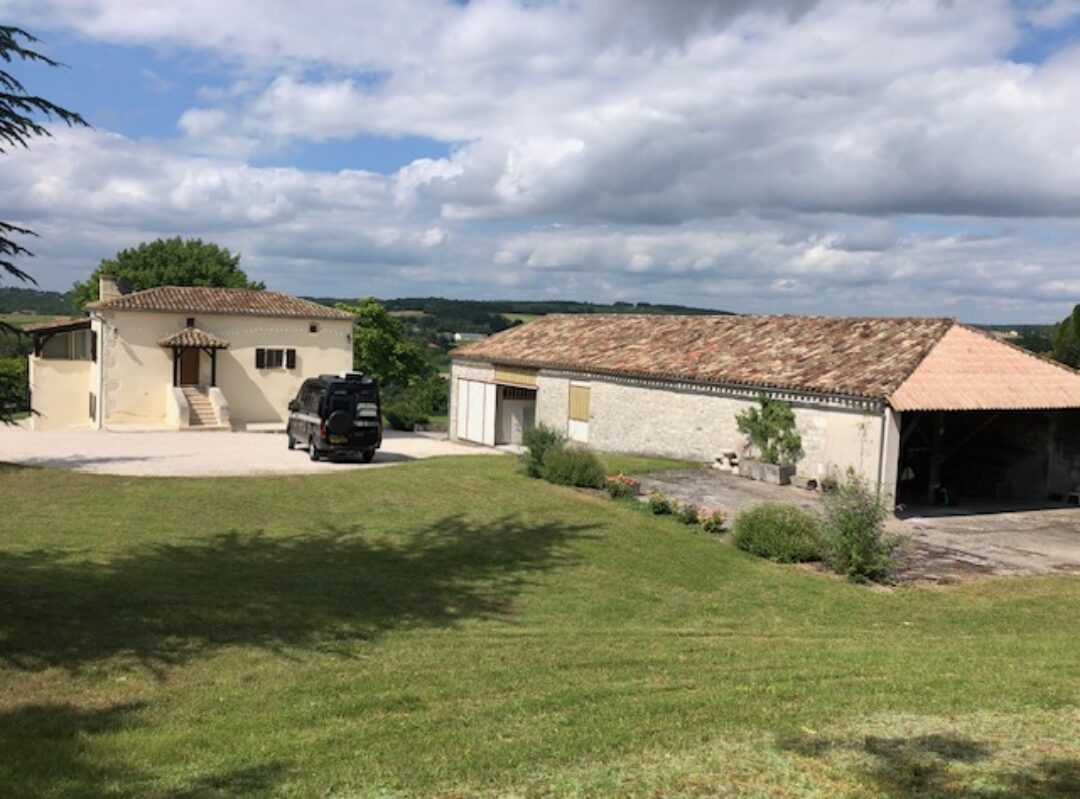Well you certainly don’t need us to point out that there’s a heatwave going on in Europe and the UK. You’ve probably seen there have been serious wildfires in parts of France (and other countries) and two of the biggest fires are in areas near Bordeaux that we drove through just last month. The area near the Dune du Pilat, the largest sand dune in Europe, is one that I have visited a couple of times with my French hosts and the campsites (now evacuated) in the adjacent pine forests are extremely popular with holidaymakers. Another blow for those campsites that were probably hoping for a good season after the last two years, but fortunately there have been no casualties.”
We’ve just moved on from the Lot river where we were able to keep cool in the shade and take a dip in the river when we needed to. In this heat it’s a question of managing the heat in the van as best we can by keeping everything open or closed depending on shade availability and the direction of the sun. The van came with an air conditioning unit fitted above the bedroom area but we need electric hook-up to run it so that will limit our off-grid nights in the extreme heat. We need to be mindful of campsite owner attitudes towards power consumption and the slight noise it makes so we’ve tended just to use it for a short period in the evening to cool down the van before we go to bed – even that certainly helps.
With 40C being predicted (although we’ve had 38/39C for about a week now), we decided to move somewhere a bit coastal rather than inland, but away from the beaches as we’re in peak holiday season. We found a small privately run ‘aire de camping-cars’ in the fishing village of Chaillevette, about 10km north of Royan on the west coast of the Charente-Maritime department. At our last two sites in the Lot have been run by Dutch families and the fellow campers have been predominately Dutch and Belgian so English has been the common language. We are now surrounded by French vans and it’s interesting how different nationalities are drawn to particular sites.
Shortly after our arrival at the aire, we heard and then saw a tourist train passing along the nearby railway. Te train, which used to be called ‘Le train des huîtres’ (oyster train) is now called ‘Le train des mouettes’ (seagull train) after the emblem of the Charente-Maritime region. In high season the train is usually pulled by a steam engine, but the risk of fire from a spark in the heatwave means trains are currently pulled by diesel locomotives. Never passing up the opportunity of a (potentially) scenic train ride, we found there was a service – Le Train du Marché – the following morning from the local station to La Tremblade at the end of the peninsula. We’ve done more scenic journeys and the whole agglomeration of Royan is fairly developed, but the market at the port town of La Tremblade was surprisingly large and varied. A delayed arrival due to some non-functioning level crossing barriers where the driver’s mates had to get out and walk in front of the train with red flags, à la Jenny Agutter, meant we didn’t have a huge amount of time before the return trip, but plenty long enough for shopping, breakfast of coffee and croissant and some people watching.



Proximity to the sea brings a very welcome breeze, although it’s rather like a hot hairdryer blowing permanently on you! The marshy landscape is very flat, so great for exploring by bicycle or on foot so we headed off to the next village of Mornac sur Seudre with its pretty narrow lanes with white fisherman’s cottages, another of the Plus Beaux Villages de France and one of only two in the Royan area. The village is on the left bank of the River Seudre and on the Arvert peninsula, which is a major oyster growing area, part of the renowned Marennes-Oléron basin.
Like Chaillevette, it’s an oyster producing village although historically, from the 12th to 17th centuries, its wealth was founded on salt production. It was also a strategic trading point as, to avoid the strong tides at the top of the peninsula, goods were landed at Mornac and taken across land to Royan and from there to Bordeaux by sea. Dykes were built in the marshes to create ‘pens’ or small lakes which the salt makers used to hold and preserve fish and shellfish. These were found to be perfect oyster beds and from here the oyster industry sprung up. The former oyster huts, today used rather like large beach huts, can be seen along the roadway that leads through the marshes to the river.


Although oysters are the main industry, prawns and mussels are also grown locally and one of the local dishes is l’éclade de moules’ where mussels are covered with pine needles and cooked on a barbecue. Our host at the aire cooks meals most evenings for guests and we had hoped to try them, but it didn’t transpire for some reason, however we did enjoy the novelty of being served moules marinières at our van.





